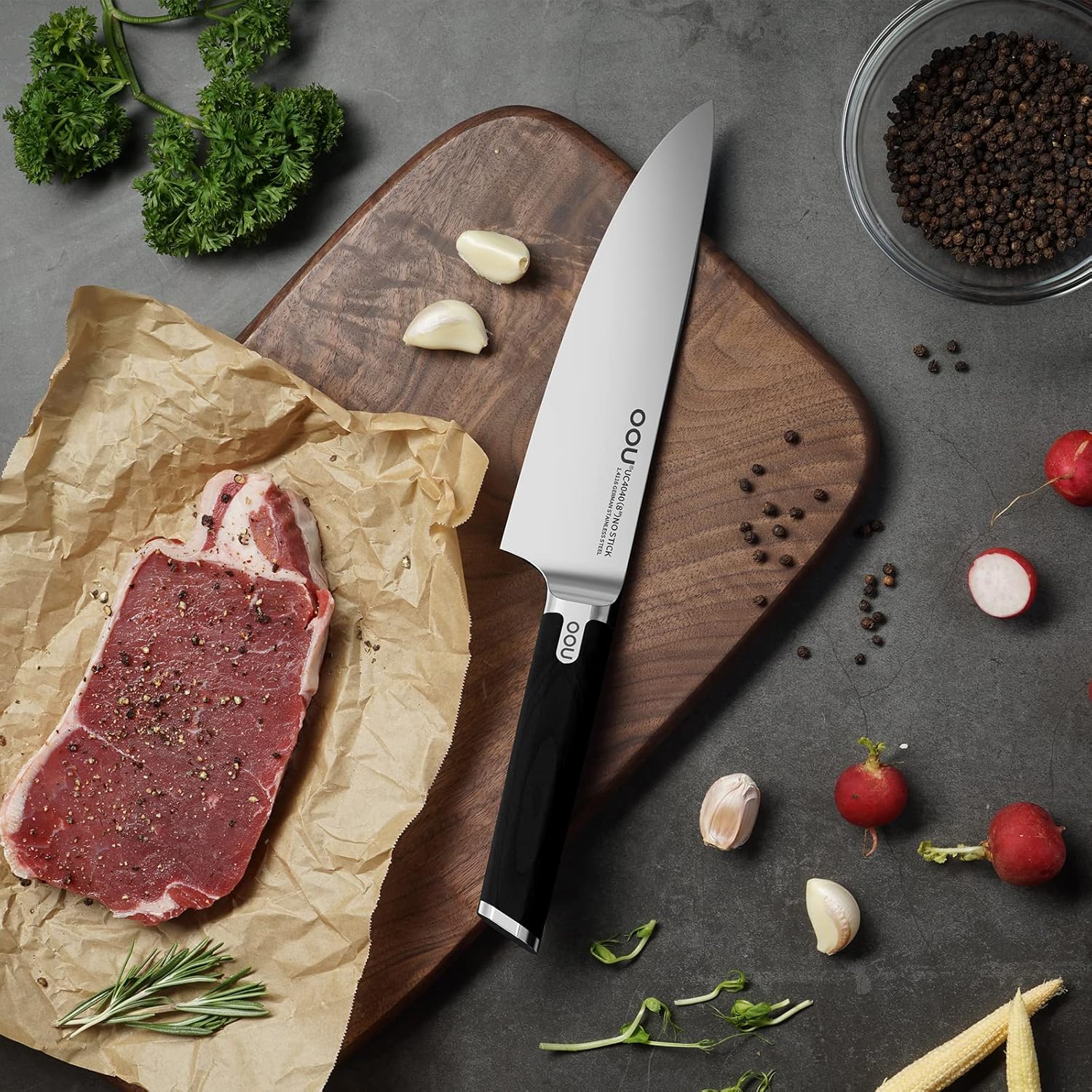Introduction
Even the best kitchen knives won’t last if they aren’t properly maintained. Many home cooks unknowingly make mistakes that shorten their knife’s lifespan. In this article, we’ll highlight five common knife maintenance mistakes and how to avoid them.
1. Using the Wrong Cutting Surface
Avoid cutting on glass, marble, or metal surfaces—these materials will quickly dull the blade.
✅ Best Cutting Boards:
-
Wooden Cutting Boards – Gentle on the blade and naturally antibacterial.
-
Bamboo Cutting Boards – Durable and eco-friendly.
❌ Avoid:
-
Glass & Granite Cutting Boards – These will dull your knife almost immediately.
Expert Tip: The National Sanitation Foundation (NSF) recommends wood or bamboo cutting boards for food safety and knife longevity.
2. Storing Knives Incorrectly
Throwing knives in a drawer causes the edges to chip and dull faster.
✅ Proper Knife Storage:
-
Knife Blocks – Keep knives secure and protected.
-
Magnetic Knife Strips – Space-saving and keeps blades from getting damaged.
-
Blade Guards – Protects knives when stored in drawers.
The Spruce Eats suggests using a knife block or magnetic strip to maximize longevity.
3. Using a Dull Knife
Many people don’t realize how dangerous a dull knife is. A sharp knife allows for precise, controlled cuts, while a dull blade forces you to apply more pressure, increasing the risk of slipping.
How to Tell If Your Knife is Dull:
-
Struggles to slice through tomatoes or onions.
-
Crushes herbs instead of slicing them cleanly.
-
Requires excessive force to cut meat.
Serious Eats recommends honing knives weekly and sharpening them every 2-3 months.



